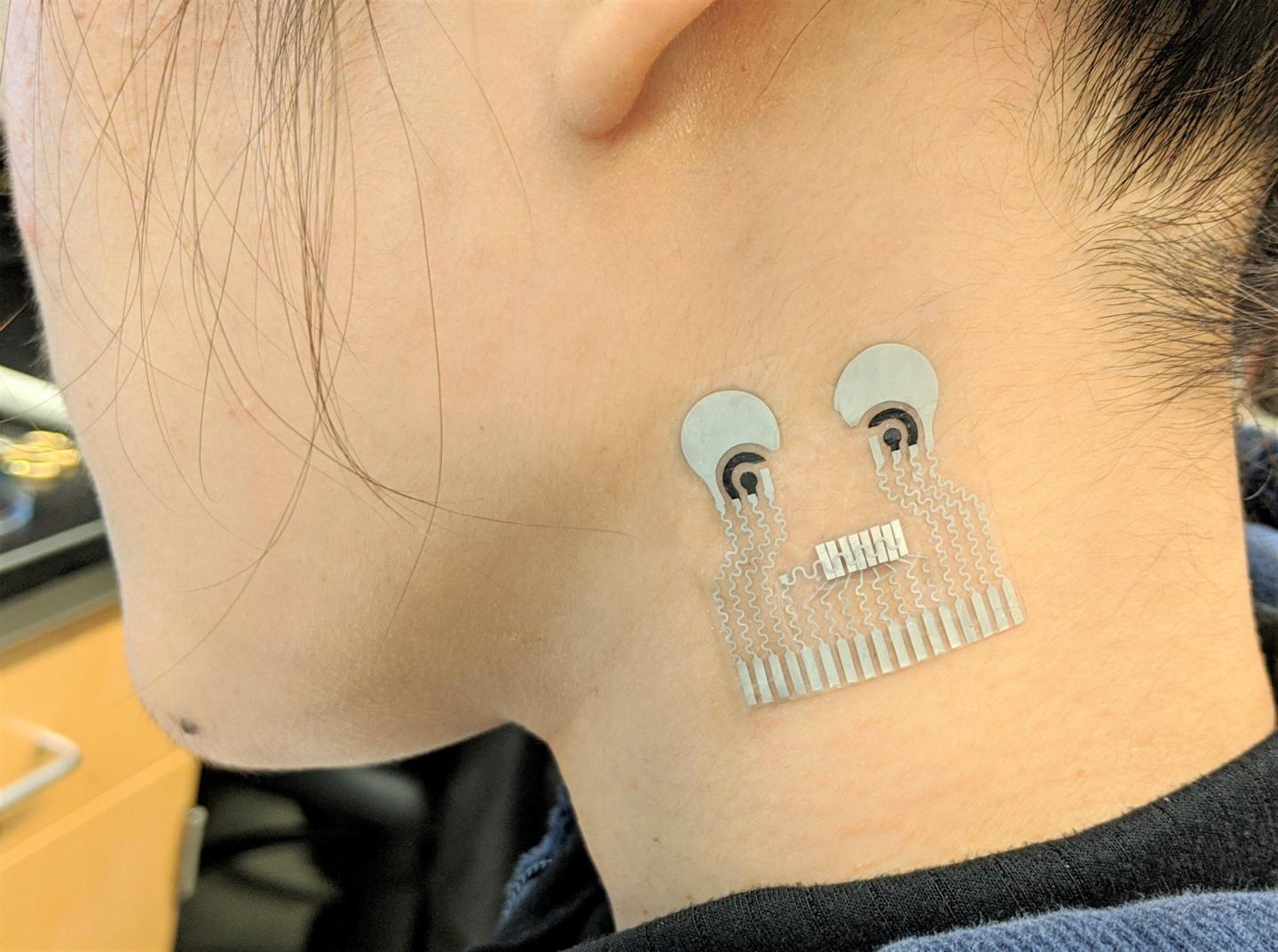Small skin patch can monitor a person’s body, scientists say after wearable technology breakthrough

Scientists have developed a small, soft patch that can be placed on people’s skin – and read a host of information about their body.
The patch is roughly the size of a postage stamp but is able to deliver information about their vitals as well as even working out what they have drunk or eaten, the researchers say.
As well as continuously tracking their blood pressure and heart rate, it can also see how much glucose, lactate, alcohol or caffeine is in their blood, the scientists say.
As such, it represents a major breakthrough in wearable technology, which aims to measure data on a person’s body and use it to improve their health and fitness.
It could also be used on patients who might otherwise be difficult to track, researchers say – including children.
“This type of wearable would be very helpful for people with underlying medical conditions to monitor their own health on a regular basis,” said Lu Yin, a nanoengineering Ph.D. student at UC San Diego and co-first author of a new study detailing the research required to make the patch.
“It would also serve as a great tool for remote patient monitoring, especially during the COVID-19 pandemic when people are minimizing in-person visits to the clinic.”
Existing sensors – which are integrated into consumer devices such as Apple Watches – are able to monitor people’s heart rate and how much oxygen is in their blood. More specialised devices allow for more specific monitoring, such as of glucose levels for people who are diabetic.
But researchers claim the new patch allows for all of that at once – and does it without the invasive and potentially upsetting procedures required to do so, which can include putting catheters deep inside people’s arteries.
While all of the sensors are brought together in the patch, it requires highly specialised engineering for each of its different readings. To sense lactate, caffeine and alcohol, for instance, the patch releases a drug into the skin to make it sweat, and then examines the sweat itself for chemical substances.
Despite all of that technology being integrated into the small patch, in tests that included drinking alcohol and exercising it performed as well as specialised equipment such as blood pressure cuffs and breathalysers, the researchers say.
The new research is the result of two different efforts at the UC San Diego Center for Wearable Sensors. It combines work to develop new wearables that can monitor a host of different signals at once, watching everything from chemical to electrophysiological changes; that was combined with separate work that has looked to create soft and stretchy patches that can go on the skin and monitor blood pressure inside the body.
The new study, published in Nature Biomedical Engineering, combines those two efforts to create a patch that can be easily stuck to the skin while gathering a host of different information , researchers say.
Now they hope to be able to add more sensors, including giving the patch the ability to spot certain diseases. They also hope to make the sensor smaller and allow it to be disconnected from the power source and display that are required to allow it to run, with the aim of making “complete system that is fully wearable”.
Join our commenting forum
Join thought-provoking conversations, follow other Independent readers and see their replies
Comments
Bookmark popover
Removed from bookmarks